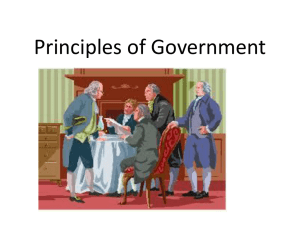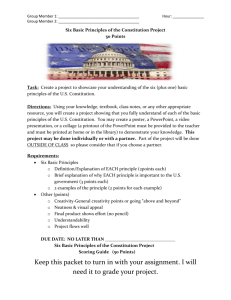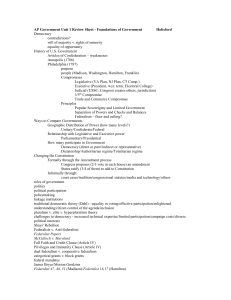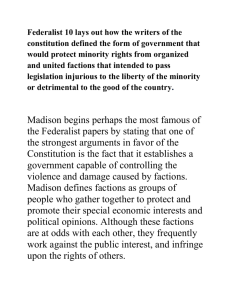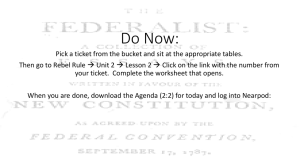Agenda - Rebel Rule
advertisement
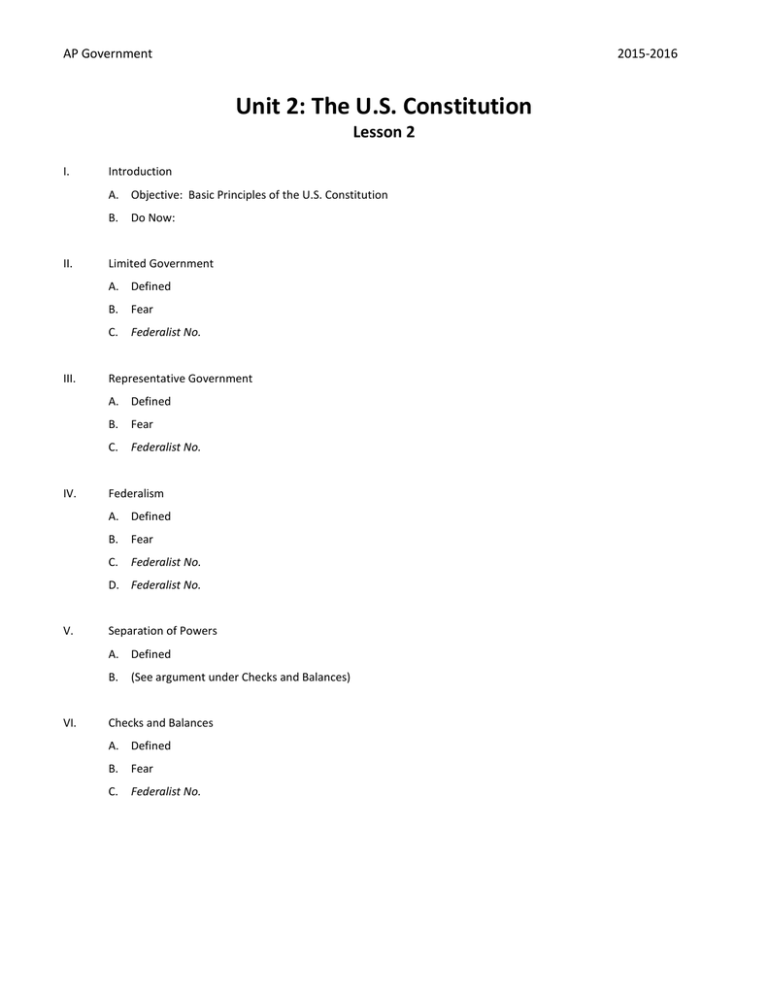
AP Government 2015-2016 Unit 2: The U.S. Constitution Lesson 2 I. Introduction A. Objective: Basic Principles of the U.S. Constitution B. II. Do Now: Limited Government A. Defined III. B. Fear C. Federalist No. Representative Government A. Defined IV. B. Fear C. Federalist No. Federalism A. Defined B. Fear C. Federalist No. D. Federalist No. V. Separation of Powers A. Defined B. VI. (See argument under Checks and Balances) Checks and Balances A. Defined B. Fear C. Federalist No. AP Government 2015-2016 “Ambition must be made to counteract ambition. The interest of the man must be connected with the constitutional rights of the place. It may be a reflection on human nature that such devices should be necessary to control the abuses of government. But what is government itself but the greatest of all reflections on human nature? If men were angels, no government would be necessary. If angels were to govern men, neither external nor internal controls on government would be necessary. In framing a government which is to be administered by men over men, the great difficulty lies in this: you must first enable the government to control the governed; and in the next place oblige it to control itself. A dependence on the people is, no doubt, the primary control on the government; but experience has taught mankind the necessity of auxiliary precautions.” VII. Conclusion A. The U.S. Constitution is based on five fundamental principles: Limited Government, Representative Government, Federalism, Separation of Powers, and Checks and Balances. B. The purpose of a limited government is the protection of the rights of the people from the abuse of government power. The Founding Fathers limited the government through the use of a written constitution. C. A representative form of government is the best way to control the effect of factions. D. Federalism further protects us from the abuse of government power and necessitates the need for states. E. A separation of powers with a system of checks and balances ensures the basic controls needed for governing both the people and the government. Key Terms, Concepts, Events, People, and Places: Limited Government Federalist No.45 Representative Government Federalist No.10 Federalism Federalist No.51 Separation of Powers Checks and Balances Questions to Consider: 1. How does a written constitution limit the power of government? 2. What two problems did critics of the Constitution have with the limited government granted by the U.S. Constitution? How does Madison address these critics? 3. Explain Madison’s issue with factions. How does representative government resolve this issue? Use the debate between republic vs. pure democracy and small area vs. large area. 4. What is the most common source of factions, according to Madison? 5. What role does federalism play in protecting the interests of the people? 6. What is the problem with a pure separation of powers? How does checks and balances resolve this issue? 7. What does Madison have to say about ambition?
